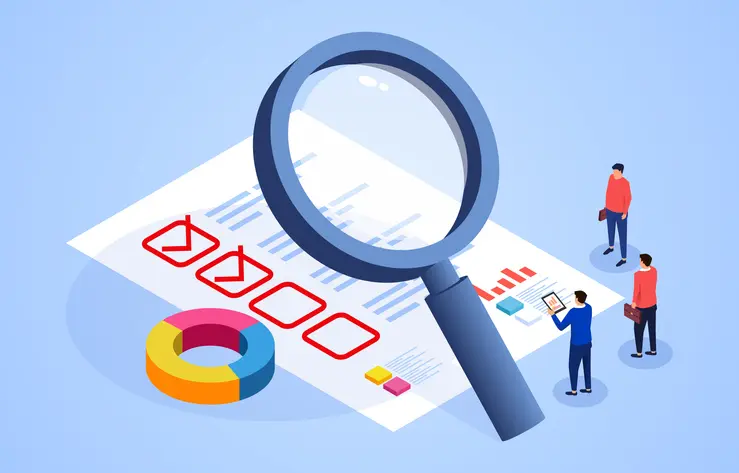Selling consumer electronics is a high-stakes game. One minute you’re riding the wave of a blockbuster product launch, and the next you’re staring at a warehouse full of last year’s model that nobody wants. Between rapid product obsolescence, high-value items tying up cash, and demand that can swing wildly overnight, managing inventory is more than just a challenge; it’s a critical factor for survival.
Why Inventory Optimization is a Game-Changer for Consumer Electronics
So, what exactly is inventory optimization? In simple terms, it’s the art and science of having the right amount of the right product, in the right place, at the right time. It’s about meeting customer demand without drowning your business in carrying costs or writing off dead stock.
Nowhere is this more crucial than in consumer electronics. The pain points are unique and unforgiving. Think about the short product lifecycles; today’s cutting-edge smartphone is tomorrow’s clearance item. The carrying costs are enormous—a warehouse full of high-end laptops or big-screen TVs represents a massive amount of capital just sitting there. This leads to the ever-present risk of dead stock, which in electronics doesn’t just lose value, it plummets.
Then you have the chaos of new product launches. You need to manage pre-orders and accurately predict demand to avoid a stockout that sends eager customers straight to your competitors. Failing to get this balance right doesn’t just mean a few missed sales. It erodes margins, infuriates customers, and can ultimately sink a business that can’t keep up.
Must-Have Features in Consumer Electronics Inventory Software
Not all inventory software is created equal, and a generic solution simply won’t cut it in this fast-paced market. When you’re vetting potential platforms, there are a few non-negotiable features you should be looking for.
First and foremost is Advanced Demand Forecasting. You need a system that uses AI and machine learning to analyze historical data, market trends, and seasonality to predict future sales. This is especially vital for forecasting demand around big product launches or holidays. Next is Real-time Multi-Channel Tracking. If you sell on your own website, in physical stores, and on marketplaces like Amazon or Best Buy, you need a single source of truth for your inventory. Real-time syncing prevents you from overselling a product you don’t actually have.
You’ll also want robust Supplier Management & Lead Time Tracking. The software should help you manage all your supplier information and accurately calculate lead times so you can replenish stock at the perfect moment. And you can’t forget Returns Management, often called reverse logistics. The ability to efficiently handle returns, test and refurbish products, and re-integrate them into available stock is a must for protecting your margins.
Another key feature is Product Lifecycle Management. Look for tools that help you manage inventory from the initial launch buzz all the way to its end-of-life, helping you plan markdowns and clear out old stock before it becomes worthless. Finally, excellent Integration Capabilities are essential. The software must seamlessly connect with the systems you already use, like your ERP, warehouse management system (WMS), and e-commerce platforms such as Shopify or Magento.
The Top 5 Inventory Optimization Software for Consumer Electronics
Here’s the core of it: a look at the top-rated software solutions specifically vetted for the demands of the consumer electronics industry. We’ve selected these based on their features, scalability, and solid industry reputations.
NetSuite ERP
NetSuite is the heavyweight champion of business management software. Its biggest strength is its all-in-one nature, combining ERP, CRM, inventory, and e-commerce into a single, unified platform. Its forecasting tools are powerful, and it’s built to handle incredible complexity.
Ideal for: Medium to large enterprises that need a comprehensive, highly scalable system to manage complex operations across multiple warehouses, sales channels, and even countries. The trade-off, of course, can be the cost and the complexity of implementation, which requires significant resources.
Cin7
Cin7 has carved out a fantastic niche for itself as a master of multi-channel retail. It excels at connecting all the places you sell, with strong built-in point-of-sale (POS) and B2B wholesale features. It’s known for its wide range of integrations, making it a great central hub for your operations.
Ideal for: Small to medium-sized businesses that have a diverse sales strategy—selling online, in physical stores, and to other businesses. If you need a robust, connected system to manage that complexity without jumping to a full-scale ERP, Cin7 is a top contender.
Intuendi
Intuendi is a prime example of a new breed of AI-driven platforms. It stands out specifically for its powerful demand forecasting and inventory optimization capabilities. It uses machine learning to analyze your sales data and suggest precise purchasing orders, helping to dramatically reduce both stockouts and overstock. Its user interface is also notably intuitive.
Ideal for: Small to medium-sized consumer electronics businesses that want to leverage cutting-edge AI to automate purchasing and streamline inventory. It’s perfect for companies that want the brains of an advanced forecasting engine without replacing their entire operational backbone with a monolithic ERP.
Zoho Inventory
Part of the sprawling and beloved Zoho ecosystem, Zoho Inventory is a fan favorite for its blend of affordability and functionality. It offers excellent order management, warehouse tracking, and multi-channel syncing at a price point that’s hard to beat. It’s known for being user-friendly and easy to set up.
Ideal for: Small businesses and startups in the electronics space. If you’re looking for a cost-effective, powerful, and intuitive solution that can integrate with other business apps and scale with you as you grow, Zoho Inventory is an excellent starting point.
SAP Business One
When you hear SAP, you might think of giant corporations, but SAP Business One is designed specifically for growing businesses. It’s a powerhouse ERP that offers incredibly robust analytics, production planning, and supply chain management features. It brings the reliability and power of a global leader to the SME market.
Ideal for: Small and medium-sized enterprises that are on a high-growth trajectory. If you anticipate your operational complexity growing significantly and need a highly reliable and comprehensive system from a world-renowned vendor, SAP Business One is a worthy investment.
How to Choose the Right Software for Your Business
Reading reviews is one thing, but making the final call requires a hard look at your own business. Here’s a practical way to approach the decision.
First, evaluate your Business Size & Complexity. Are you a small startup operating out of a single warehouse, or a multi-location enterprise dealing with international suppliers? Your scale will immediately filter the list. Next, look at your Budget & ROI. Be realistic about what you can afford, but also think about the return on investment. How much money are you currently losing to stockouts or dead inventory? A more expensive system might pay for itself quickly.
Then, consider your Existing Systems. Make a list of the software you can’t live without, like your accounting package or e-commerce platform. Any new tool must integrate smoothly with them. Finally, don’t overlook Vendor Support & Training. When you hit a snag—and you will—what level of customer support and training does the vendor offer? Good support can be priceless during implementation.
I’d recommend creating a simple comparison table. List your top contenders in the columns and these personal criteria in the rows. Score each one. This turns a gut decision into a data-driven choice tailored to you.
In the cutthroat consumer electronics market, getting your inventory right isn’t just a nice-to-have; it’s a fundamental requirement for survival and growth. The right software transforms inventory from a liability into a strategic asset. Start evaluating these options today, and you’ll be taking the single most important step to securing your business’s future.






